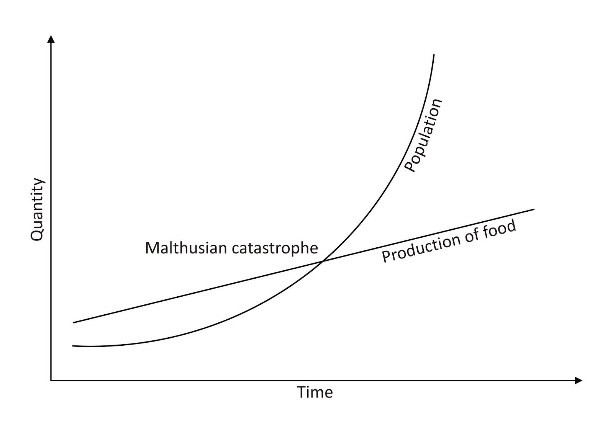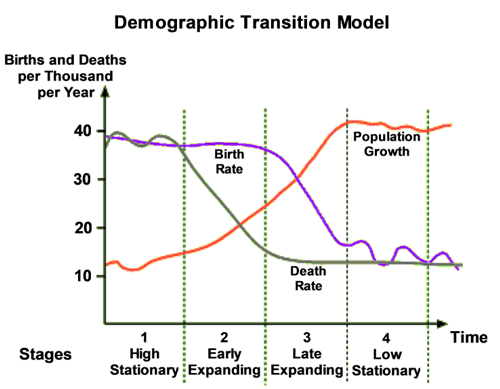Discussion about the India-OPEC Energy Dialogue and Economics of India’s Population Growth
India-OPEC Energy Dialogue
Why in news?
Representatives gathered at the OPEC Secretariat in Vienna, Austria, for the 6th High-Level Meeting of the India-OPEC Energy Dialogue, to discuss into the critical aspects of oil and energy market.

About OPEC
- The Organization of the Petroleum Exporting Countries (OPEC) is a permanent, intergovernmental Organization, created at the Baghdad Conference on September 10–14, 1960, by Iran, Iraq, Kuwait, Saudi Arabia and Venezuela.
- OPEC had its headquarters in Geneva, Switzerland, in the first five years of its existence.
- This was moved to Vienna, Austria, on September 1, 1965.
- Members : The five Founding Members were later joined by: Qatar (1961) – terminated its membership in January 2019; Indonesia (1962) – suspended its membership in January 2009, reactivated it in January 2016, but decided to suspend it again in November 2016; Libya (1962); United Arab Emirates (1967); Algeria (1969); Nigeria (1971); Ecuador (1973) – suspended its membership in December 1992, reactivated it in October 2007, but decided to withdraw its membership effective 1 January 2020; Angola (2007); Gabon (1975) – terminated its membership in January 1995 but rejoined in July 2016; Equatorial Guinea (2017); and Congo (2018).
- Objectives: OPEC’s objective is to co-ordinate and unify petroleum policies among Member Countries, in order to secure fair and stable prices for petroleum producers; an efficient, economic and regular supply of petroleum to consuming nations; and a fair return on capital to those investing in the industry.
- Importance: It has 79.5% of the world’s proven oil reserves, producing 39.7% of global oil production.
- India is the world’s 3rd largest importer of crude oil behind only the United States and China.
- India’s imports from OPEC countries constitute 60% of total crude imports.
- The relationship between India and OPEC will be pivotal in the years to come, as the world seeks to foster global energy security, deliver energy affordability and reduce emissions,
- India is the world’s 3rd largest importer of crude oil behind only the United States and China.
Significance of India-OPEC Energy Dialogue:
- The Meeting focused on key issues related to oil and energy markets with a specific emphasis on ensuring availability, affordability and sustainability, which are necessary to ensure the stability of energy markets.
- The meeting concluded with both parties underscoring the importance of fostering enhanced cooperation between OPEC and India moving forward.
- World Oil Outlook 2023, which forecasted that India would be the fastest-growing major developing economy, averaging long-term growth of 6.1% between 2022-2045 and accounting for over 28% of incremental global energy demand during the same period.
- Both sides have recognized the importance of India as the third-largest energy consumer, crude oil importer and the fourth-largest global refiner, in global economic growth and energy demand.
- The meeting also acknowledged the achievements and initiatives of India in the fields of Renewable Energy, Energy Efficiency, Hydrogen Economy, and Climate Change.
- It was agreed to hold the next High-Level Meeting of the India-OPEC Energy Dialogue in 2024 in India
About International Energy Agency:
- The International Energy Agency (IEA) is an autonomous organisation which works to ensure reliable, affordable and clean energy.
- It was established in the wake of 1973 (set up in 1974) oil crisis after the OPEC cartel had shocked the world with a steep increase in oil prices.
- It is headquartered in Paris, France
- The IEA has four main areas of focus, i.e. 4Es:
- Energy security,
- Economic development,
- Environmental awareness and
- Engagement worldwide.
- India became an associate member of the International Energy Agency in 2017.
- Mexico officially became the International Energy Agency’s 30th member country in February 2018, and its first member in Latin America.
|
What is OPEC+
|
Way forward:
- India should continue the diversification of its crude oil sources, so as to reduce its dependence on single supplier or group.
- Ensuring transparency in oil pricing and understanding the actual discounts offered by Russia can help in making informed decisions.
- As the energy ties with Russia are growing stronger, it should still manage its relations with other oil-producing nations, especially the OPEC.
- A comprehensive and forward looking energy policy is a must for India, considering both short-term energy needs and long-term sustainability.
- Robust infrastructure including pipelines, ports, storage and other logistics are utmost important for an efficient energy trade in such crucial times.
Economics of India’s Population Growth
Why In News?
- Recently it was announced that India overtook China as the world’s most populous country. According to the estimates of the United Nations, in April 2023, India’s population reached 1,425,775,850 people.

History of India’s population:

Population vs Economic development:
- Starting point of this debate is Thomas Malthus’ argument in 1798.

- Malthusianism is the theory that population growth is potentially exponential while the growth of the food supply or other resources is linear, which eventually reduces living standards to the point of triggering a population decline. This event, called a Malthusian catastrophe.
- Since then, however, the world population has grown eight times to reach 8 billion.
- During the 1950s and 60s, “the general view of economists was that high birth rates and rapid population growth in poor countries would divert scarce capital away from savings and investment, thereby placing a drag on economic development.
- However, between the 1970s and 1990s, several studies “failed to detect a robust relationship between national population growth rates and per capita income growth”
- The global view reverted in the 1990s when researchers again found a clear “negative association between population growth and economic performance”.
- During this time, World was also introduced to the concept of “demographic dividend” i.e., high economic growth when there is a bulge in the working-age population (roughly speaking, population between 15 and 65 years).

- During this time, World was also introduced to the concept of “demographic dividend” i.e., high economic growth when there is a bulge in the working-age population (roughly speaking, population between 15 and 65 years).
Demographic Dividend
According to United Nations Population Fund (UNFPA), demographic dividend means, “the economic growth potential that can result from shifts in a population’s age structure, mainly when the share of the working-age population (15 to 64) is larger than the non-working-age share of the population (14 and younger, and 65 and older)”.

In Indian Context
- Opportunities for India:
- Theory of demographic transition suggests that population growth is linked to overall levels of economic development as more people are able to produce more goods.
- According to the Economic Survey 2018-19, India’s demographic dividend will peak around 2041, when the share of working-age, i.e. 20-59 years, the population is expected to hit 59%.
- The rising young population (>66 % population in 15-59 age) provides India with a great opportunity for growth, peppered with the possibility of path-breaking innovation.
- India’s population heterogeneity ensures that this window of demographic dividend becomes available at different times in different States.
- Farming and industry will be able to benefit from economies of scale.
- It will lead to higher tax revenues which can be spent on public goods, such as health care and environmental projects.
- The size of the population is intimately connected to the global power dynamics shaping the relationship between nations and regions.
- Issues with population:
- The increase in the working-age population may lead to rising unemployment, fuelling economic and social risks.
- High population growth also affects the faster depletion of resources.
- The 65+ category is going to grow quite fast i.e., increase from 8.6% now to 13% by 2030.
- If India is unable to reap demographic dividend, it will become a demographic disaster.
Lessons for India:
- India’s fertility rate (the number of children per woman) is already below the replacement rate of 2.1 but the population will peak by 2064.
- The bigger challenge now is to figure out how to best use India’s demographic dividend because despite China growing at remarkably high over the past four decades it may become old before becoming rich.
- Countries like Singapore, Taiwan and South Korea have already shown us how demographic dividend can be reaped to achieve incredible economic growth by:
- Increasing women’s participation in the workforce. As of 2022,29.4 % of women were working or looking for work, down from 34.1% in 2003-04.
- Investing more in children and adolescents, particularly in nutrition and learning during early childhood.
- A greater focus needs to be on transitioning from secondary education to universal skilling and entrepreneurship, as done in South Korea.
- Health investments – Evidence suggests that better health facilitates improved economic production.
- Making reproductive healthcare services accessible on a rights-based approach. We need to provide universal access to high-quality primary healthcare.
- India needs to address the diversity between States. Southern States, which are advanced in demographic transition, already have a higher percentage of older people.
- A new federal approach to governance reforms for demographic dividend will need to be put in place for policy coordination between States on various emerging population issues such as migration, ageing, skilling, female workforce participation and urbanization.
Conclusion:
- India has a window of opportunity to reap the benefits of demographic dividend until 2040s otherwise it could become demographic liability or demographic disaster.
